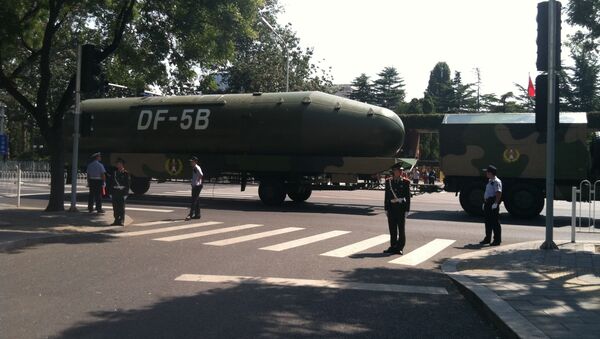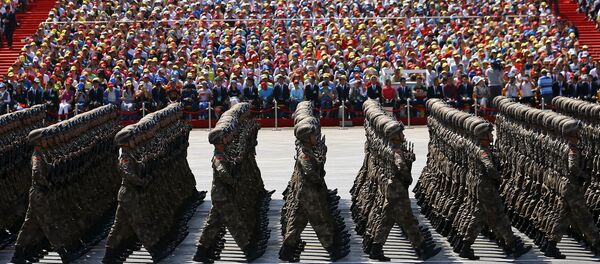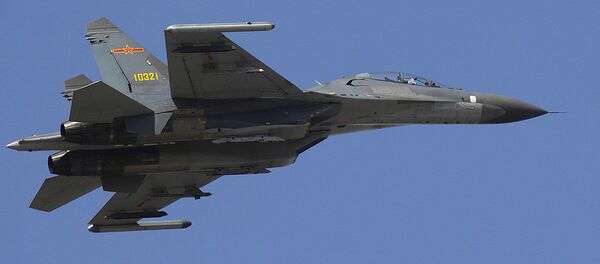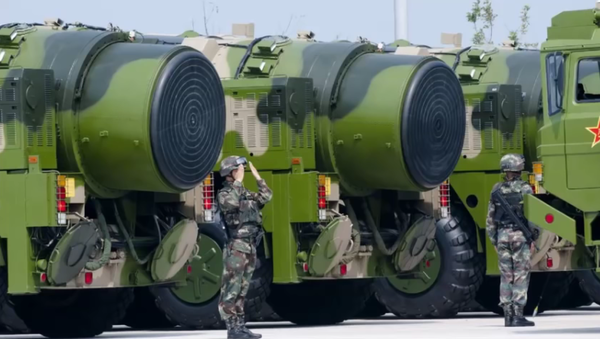On January 31 Bill Gertz, a senior editor of the Washington Free Beacon, reported that Beijing had flight tested "a new variant of a long-range missile with 10 warheads," dubbing it a "dramatic shift in Beijing's strategic nuclear posture."
"The flight test of the DF-5C missile was carried out earlier this month using 10 multiple independently targetable reentry vehicles, or MIRVs," he wrote, citing US defense officials.
According to the journalist, the Dongfeng-5C intercontinental ballistic missile (ICBM) was fired from the Taiyuan Satellite Launch Center (TSLC) in Shanxi Province, and flew to a desert in western China.
"The test of a missile with 10 warheads is significant because it indicates the secretive Chinese military is increasing the number of warheads in its arsenal," the article reads, warning that a boost in the Chinese nuclear arsenal could prompt the Pentagon to join the race.
However, Catherine Wong of South China Morning Post argues that the assumption that the test would have been aimed at US President Donald Trump, known for his tough rhetoric toward China, is unfounded.
She quoted a Chinese military expert from an institute affiliated with the People's Liberation Army (PLA) who explained that the flight test "is not a random decision to be made just because Trump is now in office."
"The test of a nuclear missile requires permission from the highest level — the Central Military Commission. It takes at least one year for the military to get the approval and to prepare for it," the expert said, as quoted by Wong.
Back in February 2016 in his article for The Washington Times, Gertz reported that China's military had begun upgrading their DF-5 missiles with multiple warheads (MIRVs), referring to data obtained by US intelligence services.
Speaking to Sputnik, Kashin underscored that these reports indicate that the PLA is unlikely to replace the DF-5C with its brand new Dongfeng-41 (DF-41) nuclear solid-fueled road-mobile intercontinental ballistic missiles (ICBM), as had previously been expected.
"The DF-5's strengths are obvious. This is a powerful liquid-fuel missile which weighs 183 tons. Its energy potential is so great that it [led to China] creating a family of space launch vehicles based [upon this missile]. It is capable of delivering a powerful front section with ten warheads and the means of overcoming ballistic missile defenses to the US," Kashin said.
On the other hand, however, this missile is not mobile and is fired from tunnels and silos, he noted. It also requires from 30-60 minutes to two hours to launch the rocket. Given a limited number of launches, these missiles could be destroyed by a preemptive strike.
"Now the situation has changed," Kashin noted, "First of all, the DF-5 is no longer the only Chinese carrier of nuclear weapons that could reach US territory. The DF-31 and DF-41 also pose a challenge. Second, China is creating its own ballistic missile early warning system (BMEWS) and strategic missile defense (MD) system."
According to Kashin, the deployment of the BMEWS and MD systems could enable Beijing to use these missiles for conducting a counter-preemptive strike against a hypothetical enemy.
The Russian military analyst assumed that Beijing could increase the production of the DF-5 given the fact that they are cheaper to produce and has a longer service than the DF-41.
"Thus, it appears that there are reasons to expect China to make a spectacular breakthrough that in coming years it will bring it closer to the US and Russia in terms of strategic nuclear capabilities. This will prompt radical changes in the rules of the game in the Asia-Pacific region," Kashin stressed.





